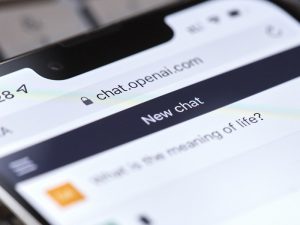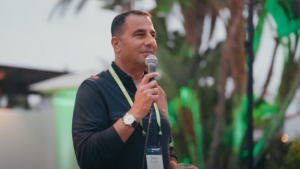Monday Mobile Roundup: AT&T Halves Nokia Lumia Price
![]() Today’s mobile news roundup features Nokia Lumia’s price drop, Fujifilm suing Motorola over a patent infringement, smartphones being used to diagnose ear infections, Korea’s battlefield apps, and more.
Today’s mobile news roundup features Nokia Lumia’s price drop, Fujifilm suing Motorola over a patent infringement, smartphones being used to diagnose ear infections, Korea’s battlefield apps, and more.
AT&T drops Lumia price
AT&T halved the already cheap price of the Nokia Lumia 900, from $99.99 with a two-year contract, to now only $49.99 with a two year contract. The price cut may sound like good news for consumers wanting to purchase the Lumia 900 but if you take into consideration that it won’t be able to support Windows Phone 8, and no hope for support or additional updates other than the Windows Phone 7.8 version – which is almost like Windows Phone 8 but not quite, consumers might still feel a little bit apprehensive in buying the Lumia 900.
Nokia is set to have their second quarter report on Thursday, July 19, and their business is expected to fall further down the red line. Analysts expect the Finnish company to have an operating loss of €236 million ($288 million) from their handset business, double the €127 million loss from the previous quarter. Nokia was counting on the success of their Lumia line and though some gave it passing marks, the fact that it won’t be getting more Windows Phone updates is just unnerving for consumers. Would you buy something that’s already on the end of its line?
In other Nokia-Microsoft related news, Genius Brands International, Inc., the brand responsible for the Baby Genius series of edutainment tools, partnered with the two companies and will soon be releasing two apps based on their popular Baby Genius products. The aim is to deliver their edutainment tools to toddlers and preschoolers via Nokia smartphones powered by the Windows Phone platform.
Fujifilm sues Motorola for patent infringement
![]() Fujifilm is accusing Motorola Mobility of infringing four of their patents for converting captured color images to monochrome images; a method in which devices communicate with each other over a telephone network; facial detection in digital photography; and a process for allowing high-resolution images captured by an image sensor to be displayed on a low-resolution view finder.
Fujifilm is accusing Motorola Mobility of infringing four of their patents for converting captured color images to monochrome images; a method in which devices communicate with each other over a telephone network; facial detection in digital photography; and a process for allowing high-resolution images captured by an image sensor to be displayed on a low-resolution view finder.
The infringing devices include Droid X, Razr, Razr Maxx, Droid Bionic, and Xoom. Fujifilm filed the lawsuit in the U.S. District Court for the Northern District of California when negotiating for licensing deals failed.
CellScope for ear infection diagnosis
Researchers at the University of Berkeley, Ca. developed a technology that would enable parents to monitor their child’s ear for an infection or help them manage the infection. The team of researchers were trying to develop a fluorescence microscope smartphone attachment when the idea for a smartphone Otoscope attachment was born. The team is now developing an iPhone attachment that would allow parents to see the middle ear. This would also come with an app that houses a database of ear infections that would help parents determine if their kids have an infection. The development of this technology would eliminate the need for going to the doctor immediately wherein the situation could be aggravated because of nosocomial infections or infections acquired when visiting hospitals or clinics.
Korean government developed battlefield apps
The Korean government designed and completed nine battlefield applications for the Samsung Galaxy S and other Android smartphones. The point of the battlefield apps is for military operations and development work to aid them in battle.
“If the military uses the Galaxy S II as the platform for the newly-developed smartphone applications, troops will be able to use the cellphone for at least five to six years without changing it,” a Korean senior defence officer said.
The apps include the Battlefield Augmented Reality System (BARS) which displays maps and animated terrain to assist military planning, an app to track troops and military units via GPS, an app that would allow the secure transfer of messages and files, as well as other apps which can replay audio and visual messages simultaneously.
Asahi to push Android app development
Asahi Technologies, a New York based custom software solutions provider, shows great confidence in the Android platform as they announced Design, development, testing and deployment of custom Android applications for business enterprises at affordable cost.
“Asahi Technologies is committed to leverage the powerful underlying Android architecture and further accelerate mobile application development by rendering technologies such as PHP and HTML5,” stated Vinod Subbiah, CEO of Asahi Technologies. “The major advantage with Android platform is that it is based on Linux kernel which makes it extremely stable and secure for web based application development.”
The company has a team of Android application developers experienced in rendering applications using Java and Android SDK for Business, Finance, Entertainment and Interactive Education applications.
A message from John Furrier, co-founder of SiliconANGLE:
Your vote of support is important to us and it helps us keep the content FREE.
One click below supports our mission to provide free, deep, and relevant content.
Join our community on YouTube
Join the community that includes more than 15,000 #CubeAlumni experts, including Amazon.com CEO Andy Jassy, Dell Technologies founder and CEO Michael Dell, Intel CEO Pat Gelsinger, and many more luminaries and experts.
THANK YOU





















